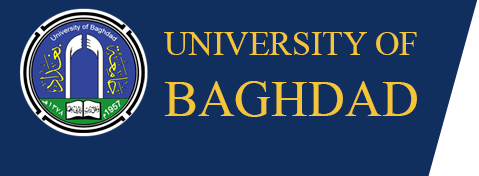Use of new way to feed Iraqi bees to improve the properties of productivity and therapeutic of the honey
Prepared by:
Ikhlas Mohammed Farhan/Ministry of science and techmologies
Dr. Ruqaiba Ali Jijan/
Department of Food Science, College of agriculture, University of Baghdad
Teacher: Lina Qassim Adnan Al-Kinani/
Mr. Mohammed Abdul Jaleel Mahmood/
Teacher: Lina Qassim Adnan Al-Kinani/
Department of Food Science, College of agriculture, University of Karbala
Mr. Mohammed Abdul Jaleel Mahmood/
Department of plant protection, College of agriculture, University of Baghdad
Abstract
The aim of this patent is to use an innovative new way to feed bee colonies, which return to local strain of Honey bee (Apis mellifera L.) in Iraq by using supplementary feeding represented by sucrose dissolved in magnetized water, which has an important role as following:
-Improve Performance of life at honey bee and Represented by ( rate of egg , brood area , pollen space and honey space )
-Population growth of honey bee colonies when you follow innovative way compared traditional way
-effect of feed sugar dissolved in magnetized water, on worker bees activity in an early stage and collect pollen during different time periods of the day
-Increase the amount of honey product was 42.2% compared to the amount of honey producer in the traditional way.
-increasing protective effect of honey formed by feeding bees by using innovative way, honey (code honey D) with honey formed by conventional nutrition which always using a general water with sugar ( code Honey B ), and compare results them with honey formed by- natural feed sources (code honey A) , as follow:
-Reduced significantly in chromosomal aberrations (CA) and Micronucleus (MN), and increased significantly in Mitotic index (MI), increasing with the treatment period
-Recording significant decrease in MI and significant increase in MN, CAs , in animals groups treated with CP (positive control) compared with negative control
-Improved biomarkers, (MI, and CA, and MN ,) when interaction between honey D and Cyclophosphamide (CP) . honey D achieved the best effectiveness to reduce genotoxicity effect of CP which showed nearly the same values of negative control , the cytogenetic effects was similar with comparison group (honey A) and negative control in all treatment
-Honey B that formed by conventional feeding using a general water with sugar was less effective than honey D to reduce genotoxic effect of CP compared with the comparison group (honey (A) and negative control
-The histopathological examination of liver treated with cyclophosphamid revealed necrosis of hepatocytes surrounding central venule, , and cells lining the blood vessels and additionally, infiltration of inflammatory cells, and this indicates severe damage of the liver tissues. In contrast, honey D were able to modulate these effects, and improvement in liver tissue , Liver restoration of normal histological structure,The results of honey D came similar with the results of honey A in all treatment , this study showed the importance of honey D to provide liver protection by lowering the values of these indicators, or make it part of the normal level and repair of CP damages the liver, while some histological changes CP-induced was continued in histological sections of liver , when treatment with honey B
-Histopathological study of the liver was also confirmation for histopathological study of the kidneys , microscopic examination of the kidneys in the positive control (CP) cyclophosphamide demonstrated many histopathological changes, it was observe shrinkage of the glomeruli , Expansion in Bowman’s capsule cavity and infiltration of inflammatory cells and mononuclear and expansion of the urinary tubule. all pathological changes has been removed and improved the kidneys architecture in animals treated with honey D at first place, and then honey A, While treatment with honey B did not show the same efficiency in reducing the pathological changes compared with CP group
-A significant decrease in the activity of ALT, ALP and AST in the serum of aluminium in mice group treated with kinds of honey A, D, as compared with the negative control, While Honey B achieved less effective in reducing the levels of these enzymes activities induced by CP
-Results of honey D was similar with the results of comparison group (honey A), in reducing increase in the levels of urea, creatinine when compared to CP-treated animals, which indicates its ability to improve renal function. Meanwhile, Honey B was less efficient in reducing the proportion of creatinine and urea in all treatment .
-Highest protective action when honey D given pre and simultaneous treatment with the drug CP , and to less effect in post treatment. which means that the honey D considered as Desmutagens at the first degree and Bioantimutagens at the second degree.

